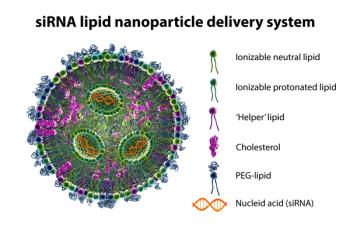
Enantioselectivity in LC Evaluated by Variations in Modifiers and Modifier Concentration
Since similar chiral recognition mechanisms were observed for benzoin (B) and methyl mandelate (MM), a three-site enantioselectivity model was proposed to interpret the data being sought by researchers.
When it comes to enantioselective analysis, liquid chromatography (LC) has become the most widely used technique, but evaluation of chiral adsorbents has continued over the last few decades, in a quest to find the most effective chiral selector for separating enantiomers (1). A new study out of the Department of Chemical Engineering and Biotechnology at National Taipei University of Technology in Taipei, Taiwan investigated the effects of certain solvents on the recognition behaviors of Chiralpak IB as a sorbent, additionally examining how dependent the enantioselectivity of benzoin (B) and methyl mandelate (MM) were on mobile phase composition.
A major research interest of the pharmaceutical industry, enantiomer pairs of chiral drugs differ considerably, according to the authors, both pharmacodynamically and pharmacokinetically (1). Both molecular chirality and enantiomer separation are areas of continuous study for those in the pharmaceutical field, and the research team said that one key factor in chiral recognition is the arrangement of higher-order structures made possible by the complex molecular environments, including hydrogen bonding and phenyl groups, of commercial sorbents based on polysaccharides (PSs) that leverage chiral stationary phases (CSPs).
Enantiomer drug pairs are a specific subset of pharmaceutical compounds that consist of two mirror-image molecules (enantiomers) with identical chemical compositions but opposite spatial arrangements. These enantiomers interact with biological systems, such as receptors or enzymes, in distinct ways due to their chiral nature. Consequently, enantiomer drug pairs can exhibit differences in pharmacological activity, metabolism, and potential side effects, even though they have the same chemical formula. The study and development of enantiomer drugs are crucial for optimizing therapeutic effects while minimizing adverse reactions, making them a significant focus in the pharmaceutical industry.
This report, published in the Journal of Chromatography A, described a minor disturbance method for determining adsorption isotherms of the organic modifiers ethanol (EtOH), 1-butanol (BuOH), and 1-propanol (PrOH) (1). PS-based CSPs are often deployed under alkane or alcohol conditions in normal-phase liquid chromatography (NPLC), but previous retention models based on organic modifier content (CM) have failed, the researchers said, to adequately assess enantioselectivity.
Regarding benzoin (B) and methyl mandelate (MM), because similar chiral recognition mechanisms were observed for both, a local retention model as well as a three-site model were devised in conjunction as a means of measuring qualitative and quantitative correlations between the concentration of modifiers and enantioselectivity. The researchers said that a two-site model had been used in the past to illustrate the heterogeneity of adsorption on CSPs—correcting previous assumptions in literature by observing that the surface of most commercially available CSPs is heterogeneous (1).
The team went on to say, however, that results gleaned from a two-site model are often “only an approximation,” since CSPs are likely to have more than two adsorption site types (1). This study mentioned anecdotal reports of chiral interactions with three or four such sites. Therefore, a key focus of the research was to explore scenarios in which more than two types of chiral adsorption sites were present, and what the influence might be on enantioselective retention behavior in those cases.
In summarizing their work, the researchers said that the mechanism of heterogeneous adsorption is critical to understanding the relationship between enantioselectivity and mobile phase composition. Despite this, there are still gaps in the available information, and a systematic theoretical framework that serves to fully define the correlation has not yet been developed. This study advances previous research, but allows for further examination that may yet provide more definitive and accurate answers, potentially resulting in broader real-world applications.
Reference
(1) Tsui, H.-W.; Huang, S.-X.; Tseng, T.-H. Heterogeneous adsorption mechanisms for describing enantioselective retention in normal-phase liquid chromatography. J. Chromatogr. A 2023, 1704, 464140. DOI:
Newsletter
Join the global community of analytical scientists who trust LCGC for insights on the latest techniques, trends, and expert solutions in chromatography.




